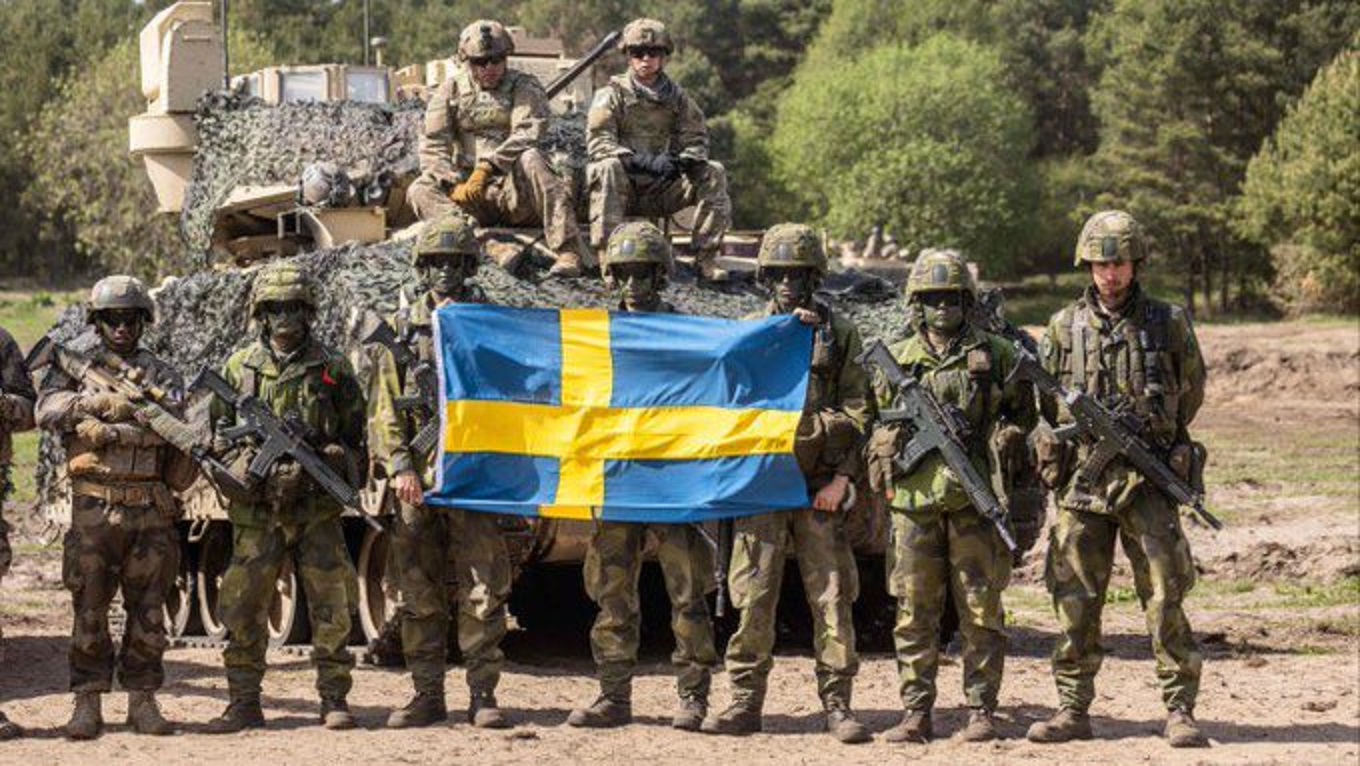
Hungarian parliament approves Sweden NATO Membership
Today is a historic day. The parliaments of all NATO member states have now voted in favour of Swedish accession to NATO. Sweden stands ready to shoulder its responsibility for Euro-Atlantic security.
Alleged Swedish soldiers celebrating their NATO membership
Sweden has achieved interoperability with the rest of NATO ???? pic.twitter.com/l9jTVD0NXF
— Kim Dotcom (@KimDotcom) February 26, 2024
However Putin has this to say about Sweden Joining NATO:
“There’s nothing might concern us with Finland & Sweden becoming NATO members” “But they should understand they didn’t face any threats from us – but if NATO Troops & infrastructure are deployed we will be compelled to respond in kind”
Both the West & Russian rhetoric is becoming more aggressive & threatening. Tensions are increasing & we are only one wrong move away from major escalation.
???????? Putin on Sweden NATO Membership
— Concerned Citizen (@BGatesIsaPyscho) February 26, 2024
“There’s nothing might concern us with Finland & Sweden becoming NATO members”
“But they should understand they didn’t face any threats from us – but if NATO Troops & infrastructure are deployed we will be compelled to respond in kind”
Both… pic.twitter.com/0g9gaA5WWQ
More Context by Jack Detsch:

NATO Lake
Sweden is the world’s largest archipelago. It has more than 267,000 islands. How do the Swedes define an “island” in their straits and seas? Any piece of land you can stand on with two dry feet. Here’s how adding Sweden’s 2,000-mi coastline and 1,000s of islands will change NATO.
Here’s the context: The Nordic and Baltic countries can’t survive financially without keeping their archipelagoes and the inlets to the Baltic Sea open to maintain commerce through the region. About 30 percent of foreign trade flows through Gothenburg port, in the west.
NATO will get another capable navy that can deal in shallow waters less than 200 feet deep dotted with gulfs, islands, narrow straits, and critical infrastructure. The Baltic Sea region is dotted with oil rigs, gas rigs, underwater pipelines, and underwater cables.

Ever since Russia’s full-scale invasion of Ukraine, the Nordic countries have teamed up to follow Russian vessels across the Baltic. From Norway, the Nordic countries track Russian ships back to St. Petersburg, following them with fixed & mobile sensors, country-by-country.
The Kremlin used to harass US ships in the region. Now the shoe is on the other foot. “[Russia] followed every American vessel that entered the Baltic Sea before,” Sweden Navy chief Adm. Ewa Skoog Haslum told me in October. “They really followed it. They can’t do that any longer.”
Russian game plan is to surround and show presence toward the UK, the door jam at the western gate of the North Sea. Russia is almost equally as paranoid about keeping trade lanes open through the Baltic and is heavily dependent on to St. Petersburg & Kaliningrad.
Russia’s Baltic Fleet is largely intact, but most Russian troops & ships are tied down in Ukraine. “Russia has now a long border with NATO … but doesn’t get more forces,” said Adm. Rob Bauer, chair of NATO’s Military Committee. “If they want to invest in more forces, it will cost them.”
The Swedes have three watchwords for how they train to fight: Hide inside, run out fast, and hit hard. And they can make it tougher on the Russians by mining the narrow straits before raining missiles on the invaders.
“We use the archipelago. We hide in the archipelago. We fire our long-range weapons from within the archipelago or from the open sea,” one Swedish sailor said. There are still 50,000 mines on Baltic seabed from WWI & WWII, forcing ships to navigate tight corners laden w/ mines.
Sweden’s geography also tightens the squeeze on Russia. Everything in Kaliningrad and St. Petersburg will now be in range of NATO missiles. Gotland gives Sweden and NATO an opportunity to build out a logistical hub or block the Russian navy’s attempts to harass Western shipping
The Bay of Bothnia is a lot closer to Russia’s northern sea bases than NATO’s borders currently sit. On the flip side, NATO countries will have to defend another big Nordic state that is entirely within striking distance of Russian missiles.
Russia has been swapping out destroyers & frigates for smaller roll-on, roll-off vessels that aren’t typically used in combat but can still be up-armed w/ cruise missiles.


